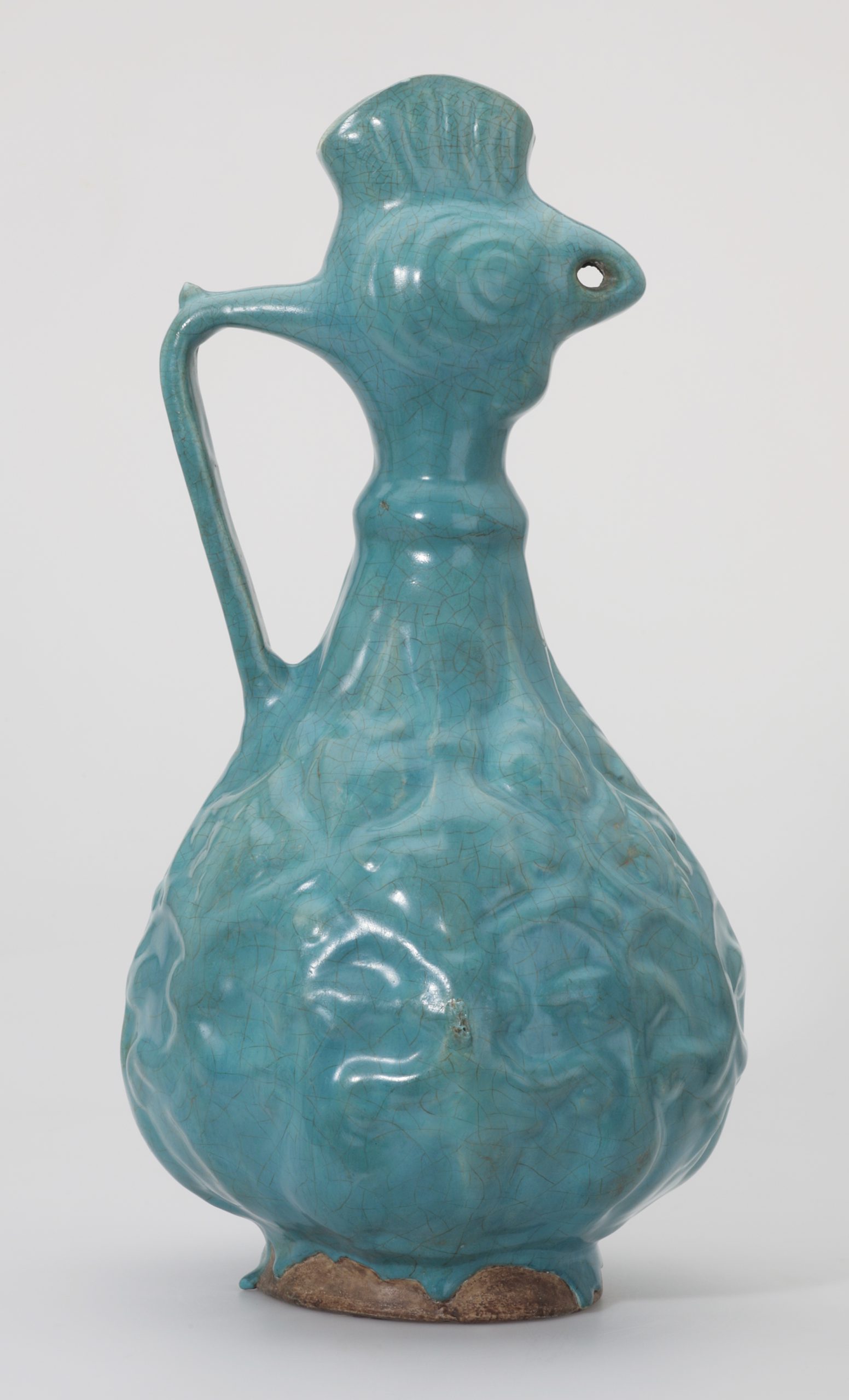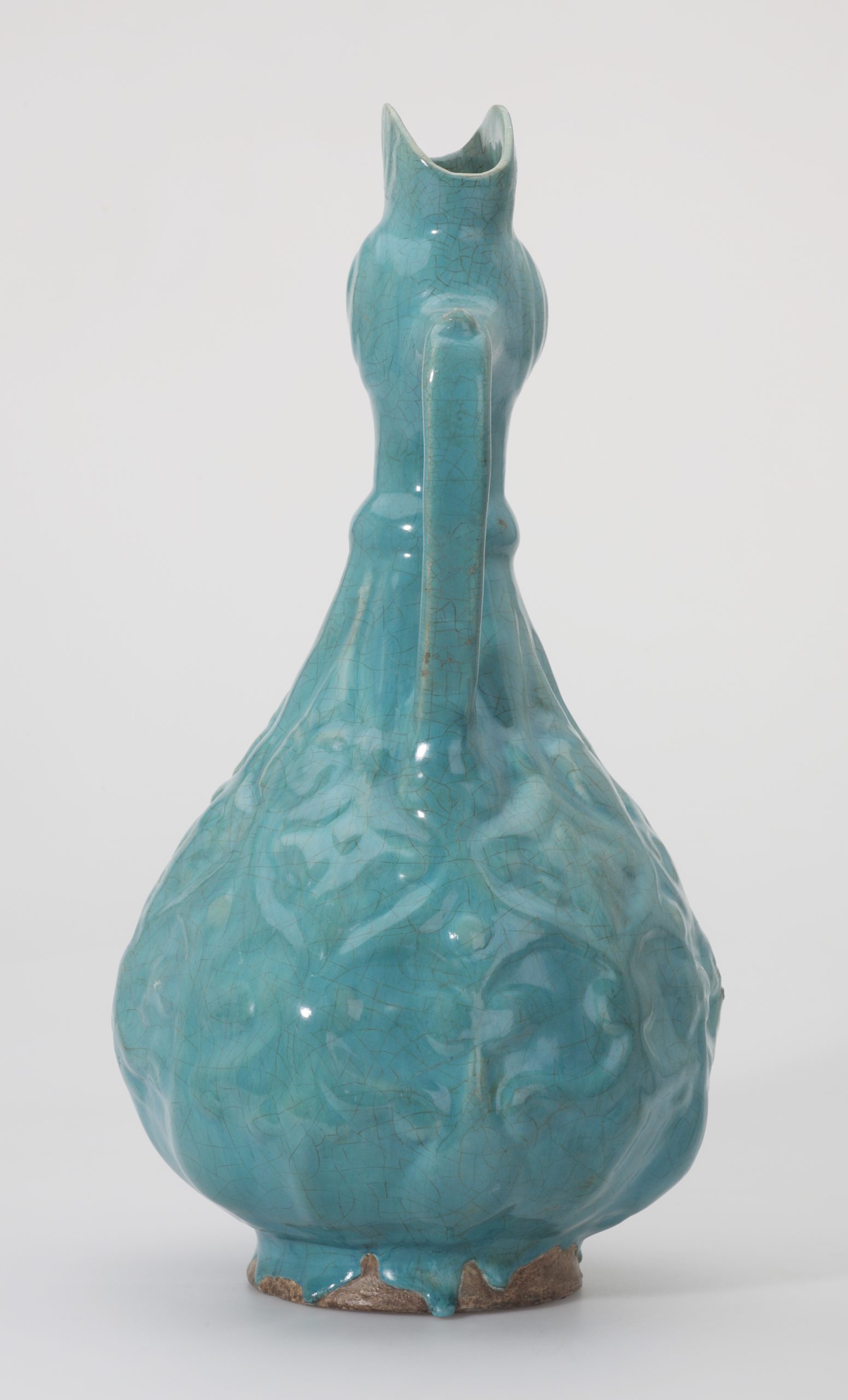 Print Page
Print Page
 Print Page
Print Page
Location: Iran
Materials: stonepaste ware with moulded decoration under an opaque turquoise glaze
Dimensions: 42.5 x 20.7cm
Accession Number: POT 855
Other Notes:
This monumental ewer is beautifully decorated with a precisely moulded pattern consisting of a continuous row of upright palmette trees, alternating with smaller trees terminating in a palmette blossom that hang upside-down, thus filling the interstices. The brilliant turquoise glaze, though thick enough to run down the footring, is so evenly applied that no detail of the intricate pattern is lost.
Like vessels in the form of boats, bulls, horns or birds, cockerel-headed ewers were used in ancient Iran as ritual vessels. Numerous references to them occur in medieval Persian poetry. The cock was specially revered by Zoroastrians because its crowing heralds the day and drives away the demon-infested night. According to the Persian national epic, the Shahnamah (‘Book of Kings’) the bird was first domesticated by the mythical king Tahmurath, who ordered people to speak kindly to it. According to a later tradition, the Prophet prohibited men from cursing it.
Although a considerable number of cockerel-headed ewers have survived, monochrome-glazed examples appear to be rare.
Bibliography:
E.J. Grube et al, Cobalt and Lustre. The First Centuries of Islamic Pottery, The Nasser D Khalili Collection of Islamic Art, volume IX, London 1994, cat.149, pp.148, 150.
J.M. Rogers, The Arts of Islam. Masterpieces from the Khalili Collection, London 2010, cat.124, p.110.

